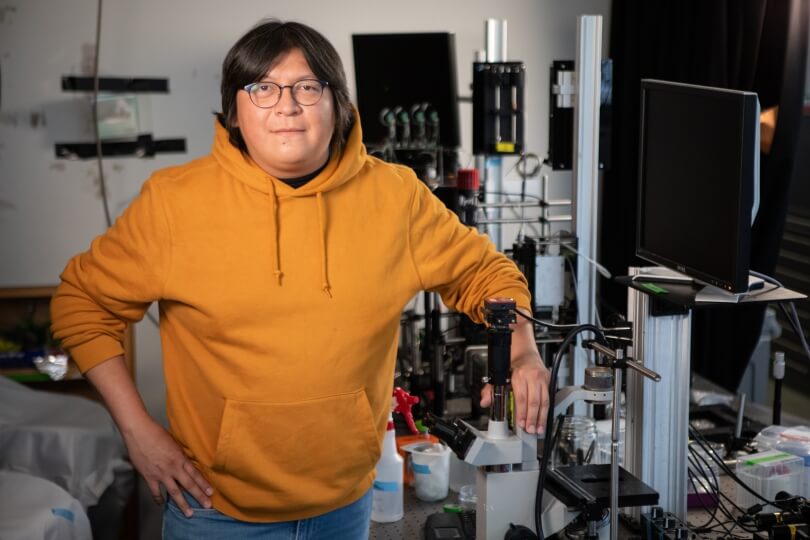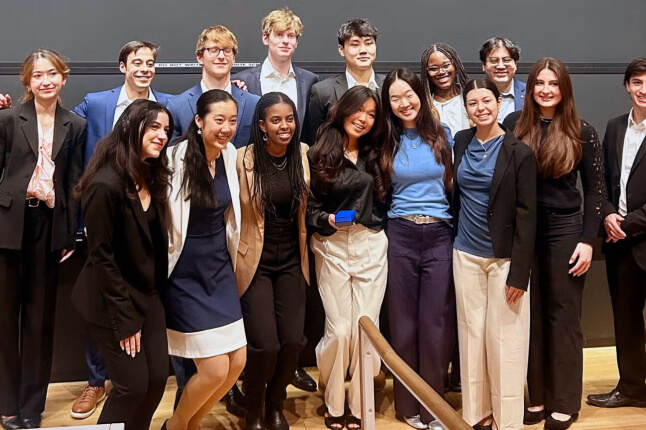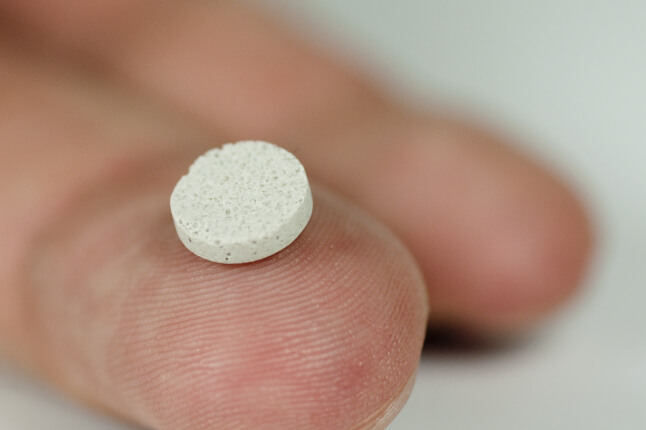News
Robinson Tom, Ph.D. student in bioengineering in the Experimental Soft Condensed Matter Group. (Eliza Grinnell/SEAS)
Robinson Tom’s interest in STEM and his passion for giving back to his Navajo Nation community have always been intertwined.
Tom, a second-year Ph.D. student in bioengineering at the Harvard John A. Paulson School of Engineering and Applied Sciences (SEAS), first became interested in science while serving as a linguist in the United States Army from 2010-14.
“I worked with electronic warfare devices, which let me listen in on enemy radio frequencies in Afghanistan,” he said. “Placing these instruments in adverse terrain was quite complicated, and I became really curious about the science behind it.”
Upon his return home, Tom said he felt disconnected from his community because of his scientific interests. Less than 1 percent of the science and engineering degrees awarded in 2020 went to Native American students, and when Tom would ask young people in his community in New Mexico about their future plans, few mentioned the sciences.
“Their answers were always things like bus driver, janitor, police officer or welder. That’s all great, but it’s because that’s all these young people see,” he said. “I wanted to change that, and I also wanted to do research that would have a real profound impact on the community.”
Unfortunately, that community would be hit by a crisis during Tom’s first year at Navajo Technical University. In 2015, the Gold King Mine spilled 3 million gallons of toxic wastewater into the Animas River, which flows into the Navajo Nation.
At the time, Tom was taking a microbiology class where he was learning about bioremediation, a process in which microorganisms are used to remove pollutants.
Robinson Tom discusses growing up in the Navajo Nation, his journey to SEAS and Ph.D. bioengineering research
“The spill affected our people, and I thought bioremediation could be an important technique to help with the contamination using microorganisms,” he said. “I got so interested in studying microorganisms, and then thought it would be cool to engineer the microbes. That led me towards bioengineering.”
Tom was also inspired by visits in 2018 by David Weitz, Mallinckrodt Professor of Physics and Applied Physics at SEAS and former Director of the Harvard Materials Research Science and Engineering Center (MRSEC), to to NTU after just forming a collaboration through a National Science Foundation-supported award between the MRSEC and NTU called the Partnership for Research and Education in Materials (PREM). Through these visits he learned about wider applications of soft matter research and new opportunities at Harvard through the MRSEC Research Experience for Undergraduates (REU) program.
As a participant in the 2019 REU program, Tom studied paper-based electrodes in the laboratory of George Whitesides, Woodford L. and Ann A. Flowers University Research Professor in the Department of Chemistry and Chemical Biology. Tom was a vital link in transferring the paper-based electrode technology from the Whitesides laboratory to Navajo Tech, where undergraduates now use these low-cost electrodes for environmental analysis and could use them in the future to assess the contamination from the Gold King Mine accident.
After graduating from NTU with the tribal University’s first bachelor’s degree in biology, Tom returned to Harvard as part of the SEAS Post-Baccalaureate Program and then applied and was accepted to the Ph.D. program in bioengineering. As a graduate student, Tom is developing a new sensitive technique for isolating rare biological phenomena as a member of Weitz’s Experimental Soft Condensed Matter Group. Traditionally, an electric field is used to manipulate microfluidic droplets and isolate them for study, but that process is complicated and difficult to optimize. Tom’s technique converts the droplets into a gel, which can then be separated more easily and faster for analysis.
I come from a rural area, and thinking of myself as a scientist at Harvard is a great feeling. In the future, I want to start a research laboratory back home to bring more indigenous scientists to the reservation. The goal is to share my knowledge.
The past 2 summers, Tom has established a new role in the REU program: as graduate mentor for NTU undergraduates, whom he’s helped transfer microfluidics research to NTU with the purpose of studying the antibacterial properties of traditional medicines such as Navajo tea.
“It felt like my master plan was coming together when we researched Navajo tea,” Tom said. “It brought up all kinds of conversations about indigenous plants and medicines, and we realized that maybe we should communicate more with the general public in the Navajo Nation. Our Elders know how to use these materials in a traditional way.”
Tom is still in the early stages of his Ph.D. program, so it may be a while before he can pursue his long-term goal to open a research laboratory back home. In the meantime, he plans to continue reaching out to his community to promote careers in academia or the sciences. He’s already seen multiple signs that programs like the MRSEC-NTU collaboration are having a positive effect, including two students from his NTU undergraduate cohort that are now in the Post-Baccalaureate Program here.
“Representation really matters on the reservation,” he said. “I’ve gotten far beyond what I could’ve expected here. I’m connecting with other Navajo students at Harvard in other fields, such as the School of Education, and that directly relates to my efforts to serve as a STEM advocate to people without a science background.”
The Harvard University Materials Research Science and Engineering Center (MRSEC) and Harvard-NTU Partnership in Research Education in Materials (PREM) are supported through the auspices of the National Science Foundation (MRSEC DMR-2011754 and PREM DMR-2122195).
Topics: Bioengineering, Belonging, Graduate Student Profile
Cutting-edge science delivered direct to your inbox.
Join the Harvard SEAS mailing list.
Press Contact
Matt Goisman | mgoisman@g.harvard.edu



